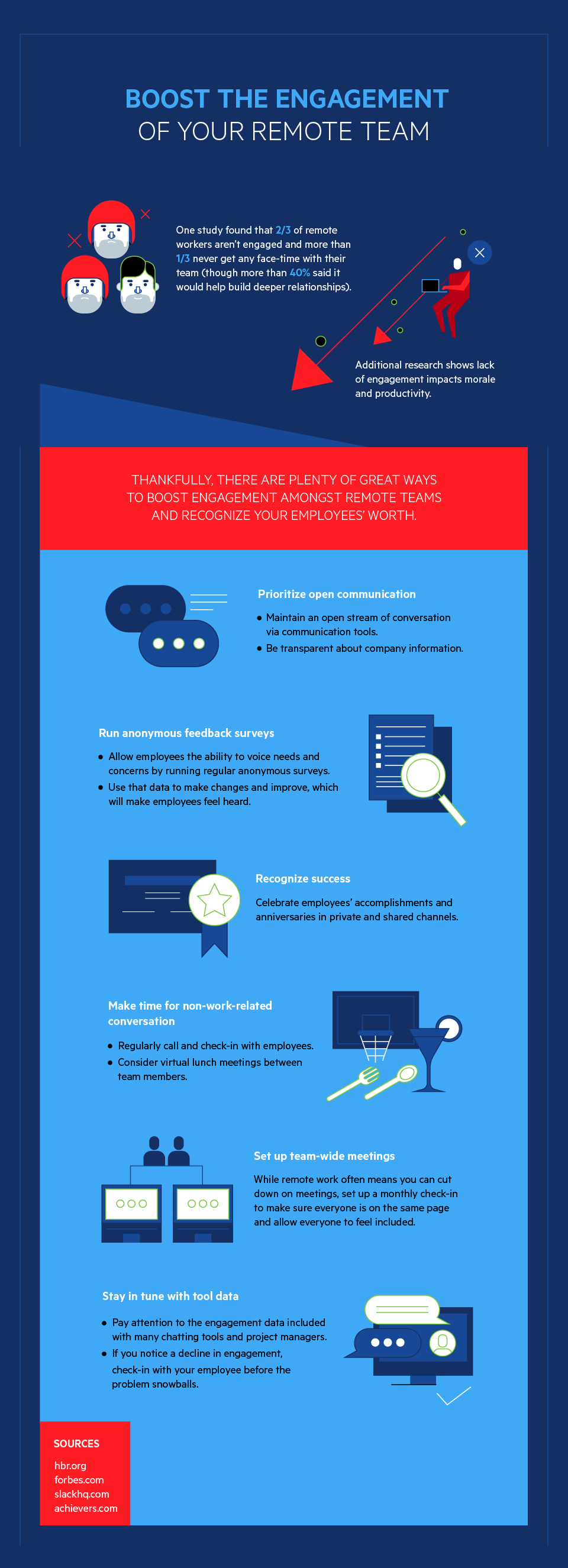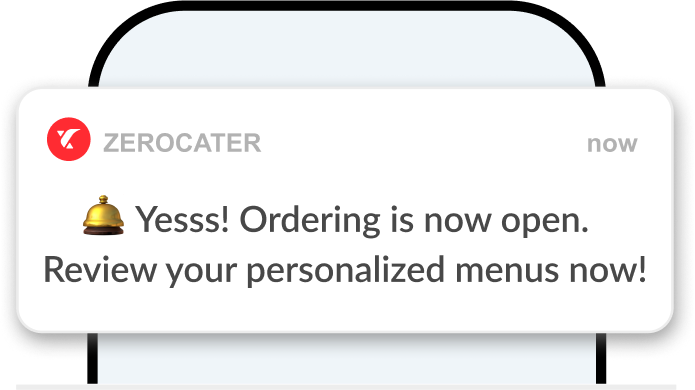Hiring a remote team comes with a lot of benefits. For instance, opening up your hiring process to include remote individuals means your talent pool isn’t restricted to a certain location and you’ll be able to attract a growing body of workers who are interested in the flexibility offered by remote work. What’s more, a fully or mostly remote team saves costs on office space and other physical resources.
That’s not to say that managing a remote team is all sunshine and rainbows. Remote teams come with their own unique challenges, including the risk of miscommunication, lapses in project tracking, mismatched time zones, an overreliance on email (which can hamper productivity), and delayed project timelines.
The Most Popular Apps and Programs for Remote Teams
Luckily, enlisting the support of proven apps and tools can make it easier to keep your remote team humming along. Below, we’ll highlight some of the most popular apps and programs companies can use to keep their remote teams connected, organized, productive, and successful.

Project Managers
- Asana
As one of the early big names in the project management space, Asana has had plenty of time to refine its features. The popular tool enables users to create new workflows, break down large projects into smaller tasks, assign those tasks to relevant parties, and check in on projects’ statuses with a quick glance. The end-to-end project management tool also integrates with a variety of web services including Google Chrome. - I Done This
Instead of wondering about and waiting for the status of a project, team members can effortlessly stay up to date with each other’s workflows with the use of I Done This. The tool solicits daily progress reports from team members and consolidates them into a digest, which makes collaboration and project management much easier. - InVision
For teams that need to collaborate on design and other digital projects, InVision offers project management tracking, easy (and visual) feedback tools, and the option to create guided tours of projects for clients or coworkers. Think of it as a digital whiteboard on which users can work together to refine a huge variety of design projects. - ProofHub
ProofHub is perhaps best described as a mix of different apps including chat tools, calendar functions, timesheets, and task management. This one-stop shop offers many distinct features including the option to assign basic or Kanban workflows to different tasks, designate custom roles to different team members, customize the platform’s aesthetic, and collaborate with both coworkers and clients. Additionally, the tool is available in more than six languages. - Teamwork
Teamwork packs a ton of features into one project management tool—from chats and messaging to a timer app, visual task managers with clearly delineated milestones, the option to break down large tasks into a series of sub-tasks, task list templates that can be reused indefinitely, and a variety of permissions and privacy settings to control who sees what. The tool is focused on providing big-picture overviews of any given project while simultaneously enabling users to track for smaller details. - Trello
This visual platform offers intuitive project management in the form of themed “boards” filled with “cards,” which contain task lists or serve as the repository for frequently accessed information. Both items on the cards and the cards themselves can easily be rearranged to reflect changing priorities and timelines, and it’s possible to assign due dates and visual status updates. Different team members can be added to boards so everyone remains on the same page about what’s getting done and who’s in charge of doing it. - Wrike
Keep team members updated about the status of projects without bombarding their inboxes. Wrike features real-time notifications so team members can easily identify which tasks have been completed (and which still need to get done). The tool is especially useful for creative teams thanks to real-time progress reporting, centralized communication, and ample tools to convert an overarching strategy into a series of actionable steps.

Chatting Tools
- Slack
Slack is one of the most popular workplace messaging apps, and for good reason. The tool allows for quick, real-time messaging; searchable communication histories; and organization into different “channels” to help streamline communication. One-on-one and group messaging are also baked into the app, and it’s easy to share files and documents between team members. - Flock
Flock emerged as an alternative to Slack, which has long dominated the workplace communication app space. Flock builds on similar functionalities as Slack and adds some distinct highlights. Standout features include video call options, the ability to add people to pre-existing conversations, affordable pricing options, and the ability to integrate a variety of apps and productivity tools in one central hub.
Conferencing Tools
- Google Hangouts
Google Hangouts is a classic way to connect with team members via video chat. It opens directly in people’s browsers, whereas many other conferencing tools require you to open the app first. The free video calls can host up to 25 participants, and (not surprisingly) the Hangout tool is fully integrated with other Google apps. - Join.me
Efficiently initiate and manage online meetings with Join.me, which enables one-link scheduling for video and audio conferencing, compatibility with mobile devices, and customization options, as well as whiteboarding and screen sharing features within meetings. It’s also designed to enable the delivery and presentation of webinars, so it’s a great option for conducting team training remotely. - UberConference
There’s no need to download software or use a PIN on UberConference, which allows users to “meet” in a centralized location (via their browser) and enjoy several helpful features including screen sharing, HD audio, document sharing, analytics, and integration with a number of mobile apps. The tool is also beloved among users for its ability to create custom hold music or employ UberConference’s own funny hold music. - Zoom
In terms of pricing and scale, Zoom is tough to beat. The free version allows for video calls with up to 100 people (for 40 minutes or less), while paid options enable conferencing capabilities for up to a whopping 1,000 people. Conference administrators can toggle users’ microphones on and off, share their screens, and conduct text chats in addition to voice and video communications, among other functionalities.
Password Managers
- 1Password
Administrators of this tool enjoy tons of functionality: The tool remembers passwords, and admins can customize the access rights of every team member. These features—combined with advanced encryption and data protection via the admin’s Master Password—allow for safe and organized password sharing. - Dashlane
Dashlane allows team members to save passwords and personal information in a safe, secure way. The password generator makes it easy to create strong passwords, while the autofill option cuts down on login times. The tool also keeps tabs on leaked or stolen passwords and offers secure sharing and syncing across multiple devices. - LastPass
LastPass is one of the early pioneers of online password management, and it’s still going strong. After downloading the browser extension, users can create a master password and then relax as LastPass makes password creation easier (thanks to automated suggestions) and centralizes password storage and sharing. The service uses encryption and two-factor authentication to provide beefed-up password security.
Cloud Storage
- Dropbox
Store files in one centralized location with Dropbox, which can be accessed from any device and automatically syncs across devices whenever a new document is added. While you have to pay for ample storage, Dropbox offers a simple, no-frills way to share and access team documents. - Google Drive
This popular cloud storage platform enables quick and easy sharing of documents, spreadsheets, other files, and folders. Team members can keep files private or share them with as many coworkers as they’d like, allowing users to manage feedback by setting permissions for each file. Google Drive’s intuitive interface makes organization simple, and changes made to files on Drive easily sync across devices. - One Hub
Share, access, preview, and edit files and assign different roles to different users all in one place. Assigning any of a variety of roles (which include Administrator, Creator, Downloader, Printer, and Viewer) is a unique feature that makes it easy to manage users’ access rights. One Hub also distinguishes itself via customization options that allow brands to incorporate their logos, color schemes, and so on.

Community Builders
- Chimp or Champ
Evaluating remote team members’ morale can be tough, but Chimp or Champ makes it easier. It invites anonymous, weekly employee check-ins that are focused on morale and employee wellbeing. It’s a great tool for managers to solicit feedback and identify opportunities to make the team happier and more productive. - Homeslice and TimeZone.io
When your team is spread across time zones, it can be tough to keep track of each other’s day-to-day schedules. A time zone manager can help your team feel closer (and minimize resentments over delayed response times) by ensuring everyone knows what time it is in different team members’ parts of the world. Homeslice is an online tool that lets you compare the times in multiple cities, while TimeZone.io enables users to build a customizable dashboard with the locations and photos of different team members. - WooBoard
Remote team members are often underappreciated, and WooBoard seeks to change that by making it easy for team members to celebrate each other’s wins. Features include peer-to-peer recognition tools, social engagement, gamification, and rewards (in the form of redeeming points for gift cards). It’s a fun way to drive daily, positive interactions between team members.
Finding the right tools for your remote team may involve a process of trial and error. But once you zero in on the tools that best enable collaboration, you’ll help ensure your team remains communicative, happy, and productive over the long term.
 to plan your catering
to plan your catering

